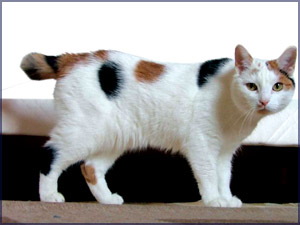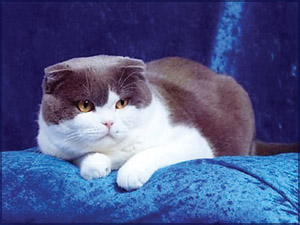|
Let's talk about pets:
Two types of unusual cats
by Ruwini Jayawardana
Scottish Folds
The first Scottish Folds were discovered in a litter of farm cats in
Scotland in 1961. As kittens, Scottish Folds
  are
born with straight ears and at three weeks old, they start to fold. A
gene mutation is responsible for the folding of the ears. are
born with straight ears and at three weeks old, they start to fold. A
gene mutation is responsible for the folding of the ears.
This dominant gene also affects the development of the spine and
legs. So to avoid deformities, Scottish Folds are never bred together.
Instead, Scottish Folds are bred with the Scottish or British Shorthair.
As a result, the litters have a mixture of kittens; some with folding
ears and some with normal, pointy or "pert" ears.
Having a crossbred cat means it will enjoy better health and live
longer. The life expectancy of a Scottish Fold cat is 10-15 years.
Scottish Folds are playful and sociable cats. They love company and
hate being left alone for long periods of time. They make great pets for
families to own because they are very affectionate, relaxed and tolerant
towards children.
The Scottish Fold, like the Manx Cat, have a double coat. Twenty
minutes should be set aside for brushing each week.
Manx Cats
  The
Manx Cat is a tail less breed of cat, but there are a few variations.
Some have a hollow where the tail should be, they're called "rumpies".
Others have the beginnings of a tail, they're called "risers". Those
with a slightly longer remainder of a tail are called "stumpies".
Finally, those with an obvious tail are called "longies". The
Manx Cat is a tail less breed of cat, but there are a few variations.
Some have a hollow where the tail should be, they're called "rumpies".
Others have the beginnings of a tail, they're called "risers". Those
with a slightly longer remainder of a tail are called "stumpies".
Finally, those with an obvious tail are called "longies".
The breed originated in the Isle of Man, an island off England's west
coast. The reason for its lack of tail is a genetic mutation.
The Manx is a difficult cat to breed successfully. The gene
associated with tailessness is also responsible for the death of kittens
before they're born. Breeders have to ensure they breed rumpies (those
with no tails) with risers, stumpies or longies (those with some sort of
tail).
 Unlike
the Scottish Fold, the Manx Cat breed has been around for over 100
years. They have a sturdy build; a round head, broad chest, short front
legs and thicker hind legs. Unlike
the Scottish Fold, the Manx Cat breed has been around for over 100
years. They have a sturdy build; a round head, broad chest, short front
legs and thicker hind legs.
They run more like rabbits than cats.
The Manx is an intelligent, long-lived cat that comes in a range of
coat and eye colours. Like the Scottish Fold, the Manx Cat has a double
coat, which might need extra care with grooming. |
